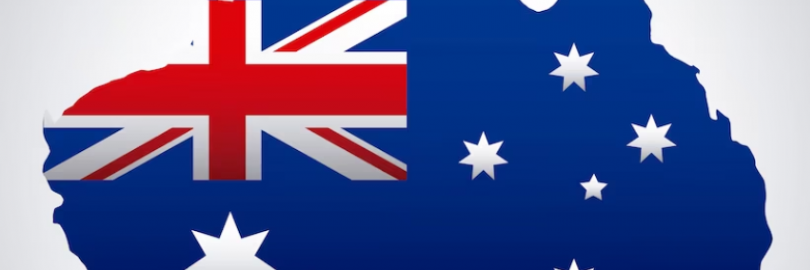Australia has always been a famous country for immigrants, and many people want to live there permanently. However, due to the tightening of Australia’s immigration policy, permanent residence in Australia is not so easy; you must meet certain conditions and apply for an Australian Permanent Residence Visa to do so. To facilitate you to have more knowledge and understanding of the Australian permanent residence, here is a compilation of the latest and most detailed Australian permanent residence PR / green card application strategy, including immigration conditions, immigration scores, scoring standards, the way to obtain Australian permanent residence, the benefits of Australian permanent residence visa, application process and materials, visa renewal and so on. In addition, after holding an Australian permanent residence visa, you can apply for Australian citizenship if you meet specific residency requirements.
What is an Australian Permanent Resident?
An Australian Permanent Resident, or PR, is a foreign national who can live in Australia permanently because they hold an Australian Permanent Resident visa.
Permanent residency is a right that allows a person who has been granted permanent residency to live in the country forever and be treated the same as a country citizen in many ways. Permanent residency in Australia is represented by a permanent residency visa, which is affixed to the country of origin’s passport. In addition to allowing you to live in Australia permanently, a permanent residency visa will enable you to travel freely and unlimitedly to and from Australia for five years.

Meanwhile, Australian permanent residence visa holders are free to settle in New Zealand and enjoy all the rights of a New Zealand green card. From the perspective of welfare policy, new permanent residence visa holders are not allowed to apply for unemployment benefits, emergency comprehensive relief and student allowances for the first two years, while all other benefits are the same, such as free primary and secondary education, student loans, free medical care, and so on. All Australian benefits are available after two years of holding the green card.
The visa holder is not a Commonwealth citizen of Australia but can be naturalised and become an Australian citizen after accumulating a certain amount of residence time.
Powers and Benefits of Australian Permanent Residence
After obtaining the right of permanent residence in Australia, you can get the following benefits (not limited to this; there are some benefits not listed):
- Minor work restrictions. Some jobs and most state or federal government jobs require citizenship, not just permanent resident status.
- The right to apply for Australian citizenship under certain conditions.
- The right to apply for a subsidised place at an educational institution (no loans are available for university tuition fees, and there may be reductions for tertiary qualifications, depending on the state).
- Permanent residents and funded students under the HELP programme may apply for tuition fee deferment under the HECS-HELP programme.
- The right to sponsor a relative as a permanent resident (i.e. to apply for a family reunion), subject to meeting the residency requirements and sponsorship conditions.
- Children born in Australia will become Australian citizens.
- The right to utilise health and social welfare benefits. There is a 2-year waiting period for some benefits.
- The right to live, work and study in New Zealand without restriction (the New Zealand Government grants this right).
Introduction of Australia Migration Card Types
Unlike countries such as the United States and Canada, Australia does not issue card-type permanent residence permits to permanent residents. Instead, a permanent residence visa is affixed to the passport of the original country of residence. The permanent residence visa does not need to be renewed if the holder lives in Australia.
However, refugees or particular asylum seekers who have been granted asylum in Australia can apply to the Australian Department of Immigration (DIAC) to obtain an Immigration Card (ImmiCard). There are four types of Australian Immigration Card:
| Evidence of Immigration Status ImmiCard | Purple, issued to asylum seekers who entered the country illegally by boat (holders of 050 or 051 asylum visas), holders of 070 bridging visas awaiting depo rtation, and those who have been granted 449, 785, 786, 790 Temporary Humanitarian Visas (THVs) or Temporary Protection Visas (TPVs). |
|
|---|---|---|
| Permanent Resident Evidence ImmiCard | Green, issued to persons who have entered Australia lawfully and have been granted an 866 Permanent Protection Visa after 23 March 2013 while in Australia. | |
| Residence Determination ImmiCard | Light blue, issued to non-citizens without visas who are living in the community from immigration custody. | |
| Australian Migration Status ImmiCard | Light green, issued to refugees without passports and special humanitarian visa holders admitted to Australia from outside the country, the Migrant Card carries an International Civil Aviation Organisation machine-readable code and can be used as a travel document on first entry to Australia. |
Australian Permanent Residence Points Requirement
Points determine your eligibility for a PR visa. You must earn at least 65 points under the Points Grid. The table below describes the different points scales:
| Category | Maximum Points |
|---|---|
| Age (25-32) | 30 |
| English language proficiency (8 items) | 20 |
| Work experience outside Australia (8-10 years) | 15 |
| Australian work experience (8-10 years) | 20 |
| Education (outside Australia) – PhD | 20 |
| Niche skills, e.g. PhD or Masters in Australian studies | 10 |
| Learning in remote areas | 5 |
| Community Language Certification | 5 |
| Year of specialisation in Australian Technical Courses | 5 |
| State Sponsorship (190 Visa) | 5 |
| Skilled spouse or de facto partner (subject to age, skills and English language requirements) | 10 |
| Spouse or de facto partner with “English proficiency” (no skills requirement or age factor to be met) | 5 |
| Applicants who have no spouse or de facto partner or whose spouse is an Australian citizen or permanent resident | 10 |
| Relative or regional sponsorship (491 visas) | 15 |
65 points is the minimum number of points required to qualify for a PR visa in Australia. Generally, the higher your score in the eligibility calculation, the better your chances of being invited to apply for permanent residence in Australia. Any score between 80 and 85 points will qualify you for a faster PR invitation.
Calculating Your Eligibility Score for Permanent Residence in Australia
Here’s more information on calculating the Australian Permanent Residence Eligibility Score. The 65 points to be achieved are based on the following criteria.
Age
If you are between 30 and 25 years of age, you will be awarded a maximum of 32 points.
| Age | Score |
|---|---|
| 18-24 | 25 |
| 25-32 | 30 |
| 33-39 | 25 |
| 40-44 | 15 |
English Language Ability
An IELTS score of 8 will give you a maximum of 20 points. However, the Australian immigration authorities allow applicants to take English proficiency tests such as IELTS, PTE, TOEFL, etc. You can try to get the required score on any of these tests.
Work Experience
Skilled work outside Australia with more than ten years of work experience in the last eight years gives you 15 points; less experience means less.

Skilled jobs with 8 to 10 years of experience in Australia from the date of application give you a maximum of 20 points.

Education
Points for the education criterion depend on the educational qualification. Generally, a doctoral degree from an Australian university or a doctoral degree from a university outside Australia that the Australian Government recognises is awarded the maximum number of points.

Spouse Applications
If your spouse is also an applicant for a PR visa, you will be eligible for additional points in your Skill Select Expression of Interest. To earn this extra 10 points, your spouse must fulfil the following requirements:
Should be less than 45 years of age
Have an essential English proficiency score
Have a work occupation code that appears in the same occupation list as the principal applicant’s listings
In line with changes to the Australian Points System from XNUMX 2019, applicants can earn points based on the following criteria for spousal applications.

Australian PR Visa Categories
Australia offers many options for applying for a permanent residence visa card. You can choose the right choice depending on your eligibility and requirements.
1. Family Stream Permanent Residence Visa
This stream is available to spouses/partners, children or parents of Australian citizens or permanent residents. Under the family stream, you can migrate to Australia if your close relative is an Australian citizen or permanent resident. Generally, the Family stream prioritises spouses/partners, dependent children, parents of Australian citizens and permanent residents. It also allows other family members, such as elderly and dependent relatives, carers, etc, to migrate to Australia to join their families.
1.1 Marriage Partner Permanent Residence
There are usually two stages:
The applicant first applies for temporary residence and then for permanent residence.
Requirements to be met:
The applicant is married to, or cohabiting with, an Australian citizen or permanent resident and meets certain conditions to apply for permanent residence.
A sponsor may sponsor the applicant for permanent residence if the Australian Government has approved the sponsor through a character test, is married to the applicant or is de facto cohabiting with the applicant, maintains a bona fide marital relationship, and has shared financial, social and mutual commitments and the continuity of the marriage. The applicant and the non-citizen sponsor must also meet IELTS 4.5 or equivalent (or evidence of 500 hours of language training) and other evidence of genuine marriage requirements when the applicant applies for permanent residence.
The visa officer evaluates marital cases in terms of “financial aspects”,/”living and residing together”,/”social relations”,/”commitment and durability of the relationship”. “Commitment and permanence of the relationship”.
Offshore applicants transition from a 309 Temporary Resident Visa to a 100 Permanent Resident Visa; onshore applicants transition from an 820 Temporary Resident Visa to an 801 Permanent Resident Visa. There are also cases where the marital relationship has lasted more than three years, and the facts are clear.
Processing Cycle:
The processing cycle is 1.5-2 years for offshore and about one year for onshore. According to the Australian Department of Home Affairs, in the 2020-21 financial year, the quota of spouse migration is 72,300; compared with the last financial year, the growth is 81.66 per cent, and spouse migration has become a big winner.
1.2 Contributory Parental Permanent Residence
This was implemented in 2003 to make the Parental Migration Scheme more accessible. Applicants will have to pay a higher visa application fee for this visa. Applicants for this visa must submit a support bond and a bond to support the bond (held for ten years). Generally, this is professionally called the 143 Contributing Parent Permanent Resident Visa, which means that this visa is used to reunite with your children in Australia. That is to say, if you do not have children who are citizens or permanent residents of Australia, this visa is irrelevant.
Conditions to be fulfilled:
Contribution class, that is, you have to spend money, each applicant to take nearly 50,000 Australian dollars to the Australian government. Usually, parents apply together, which is about 100,000 Australian dollars. In addition, it is not spending money on it; the applicant has to go through the family relationship test in advance, in line with the “Australia’s children to be the number of children equal to the greater than the number of children at home In addition, applicants have to pass the family relationship test in advance, and meet the requirements of “the number of children in Australia must be equal to the number of children in China”, as well as the income of the children in Australia to meet the requirements, and so on.
2. Work Stream Permanent Resident Visa
This visa category is for workers sponsored by an Australian employer. The various visa categories under this category include:
2.1 Skilled Independent Visa (Class 189)
English: Skilled Independent Visa. Subclass 189, the Independent Skilled Visa, is the most famous PR visa and allows you to move to Australia without a job offer or employer sponsorship.
For skilled workers with work experience
No employer sponsorship or job offer is required.
You must score at least 90 points in the Points Grid System to get this visa. The best thing about this visa is that it gives you full work rights and employee benefits like Australian citizens.
2.2 Skilled Nominated Visa (Class 190)
Subclass 190, also known as the Skilled Nominated Visa, requires a nomination from the Australian Government.
This is a state nomination visa
It requires employer sponsorship or a job offer
It requires at least three years of employer sponsorship, so you need a pre-existing job offer.
Eligibility Requirements for Subclass 190 Visa:
Nomination or sponsorship from an Australian state or territory after lodging an expression of interest
Experience in a nominated occupation on the Australian Skilled Occupation List
Completion of a skills assessment with an assessment organisation relevant to your chosen occupation
be between 18 and 45 years of age
meet the basic requirements for skilled migration, including English language, health and character checks
A minimum score of 65 on a points test
Meet health and character requirements
Benefits of the Subclass 190 visa:
This is a permanent visa that allows you to remain in Australia indefinitely. However, you can only travel to and from Australia for the first five years of your visa. After five years, you will need a Returning Resident (RRV) visa (Subclass 155 or 157) to travel overseas and re-enter as a permanent resident. Other benefits include:
Unlimited work and study in Australia
Remaining in Australia indefinitely
Subscribing to Australia’s universal health care programme
applying for Australian citizenship
Sponsoring eligible relatives for temporary or permanent visas
Visa obligations:
Includes two years’ residence in the Australian state or territory where the migrant is nominated. Visa holders can apply for a status change and live or work anywhere in Australia after two years.
2.3 Skilled Regional (Temporary) Visa (Class 491)
The 491 visa is a temporary work visa valid for five years, with two branches, state-sponsored and relative-sponsored. It suits applicants who want to travel to Australia through skilled migration but cannot meet 189 Independent Skilled Migration requirements and 190 State Sponsored Skilled Migration. Holders of this visa can obtain permanent residency in Australia through the 191 Permanent Residence Visa if they earn AUD 53,900 per annum for three consecutive years. That is to say, the 491 Remote Skilled Migration Visa allows the principal applicant to apply with their spouse or children.
Eligibility conditions for the visa:
Applicants must be nominated by a state or territory government or sponsored by an eligible relative.
Have an occupation on the relevant Skilled Occupation List
Must have a skills assessment for the occupation
Receive an invitation to apply
Applicants must obtain the required score (65)
Have the required level of English
Meet health requirements
Meet character requirements
Be under 45 years of age
With this visa, you can:
Stay in Australia for five years
Live, work and study in designated areas of Australia
Travel to and from Australia multiple times while your visa is in force
Apply for permanent residence
Extend the validity of your visa if required.
2.4 Australian Investor Visa (Class 891)
The Australian Investor Visa or Class 891 visa is for migrants who wish to start a business or undertake investment activities in Australia. That is to say, with this visa, you can stay in this country indefinitely.
Conditions to be fulfilled:
You must be the principal holder of a Subclass 162 visa
When holding a (temporary) visa (subclass 2), you must have resided in the country for at least 162 days during the four years immediately preceding the date of your application
You must hold a designated investment of A$15,000 for four years
It would be best if you were committed to continuing your business activities in Australia
You and your family must meet health and character requirements
Other eligibility criteria:
Own a business with a turnover of at least A$4 in at least 2 of the last 500,000 financial years
Have a personal and business net worth of at least A$800,000
Be under 55 unless the nominating state or territory certifies you will receive a unique economic advantage.
Achieve a passing mark in the Business Innovation and Investment Score Test, currently 65.
Processing Times
These visa applications are assessed on a case-by-case basis, and processing times may vary if you meet the following criteria
Submission of a complete application with all supporting documents
Your response time to additional information requests
Time taken by the authorities to verify the additional information you have provided
the time it takes for the authorities to receive the additional information
Permanent Residency in Australia
The 891 visa is essentially a permanent visa. Individuals who hold the required investment in the country, alone or with a partner, are eligible for this visa and can remain indefinitely.
3. Global Talent Initiative
The GTI (Global Talent Independence Programme) is designed to attract highly skilled individuals from selected industries worldwide. That is to say, it is a pathway to permanent residency and allows applicants to live and work in Australia. Applicants who meet these criteria are eligible for direct PR visas.
Who Can Apply for the GTI Programme?
- Individuals who have any work experience in one of the ten future focus areas under GTI
- Must earn an annual salary of $158,500 or more in Australia. (This high-income threshold changes with each financial year). 3.
- They must be highly qualified in their field and be able to find work in Australia quickly.
- The Department will consider the following factors when assessing the high-income threshold:
Current wages are shown through pay slips or contracts
(or), and salary is outlined in future job offers.
(or) a recent doctoral degree. Graduates in fields related to the target industry
Applicants must demonstrate that their achievements are internationally recognised and that they will benefit Australia in their field of expertise if selected through the GTI.
Applicants must have an outstanding record of professional achievement, which can be holding patents, international publications, articles, professional awards and senior positions.
Reasons to Choose the Global Talent Visa Programme
1. No skills assessment is required.
2. No minimum score requirement for candidates.
3. No state/territory nomination or company sponsorship is required.
Candidates aged 55 years and over are eligible if they can demonstrate that they can make a significant economic contribution to Australia.
Recent PhD graduates in one of the ten priority sectors may be eligible.
There is no list of occupations for the Global Talent Visa.
Other Reasons are:
Fast processing times
Direct access to permanent residency in Australia
There is no need to secure employment in Australia to apply
Access to medical insurance in Australia
Other Requirements
Applicants who meet the programme’s requirements will need a nominator to nominate them for the programme. Generally, the nominator must be nationally recognised in their field and the same area of expertise as the applicant.
The nominator must be an Australian citizen, permanent resident, or an Australian organisation with a national reputation in the same field as the applicant.
Currently, ACS (IT Professionals), Engineers Australia (Engineering Professionals) and the Institute of Managers and Leaders (IML) are now recognised as nominees for GTI applications.
Benefits of GTI
Access to roles that do not appear on the Occupational List
Negotiable terms that differ from TSS visa requirements
Priority processing of applications
There is no age limit for the visa
Value of emerging technologies such as quantum computing, artificial intelligence and virtual reality
4. Outstanding Talent Visa – 124
The Outstanding Talent Visa is designed for individuals who have demonstrated outstanding achievement in a professional, artistic or sporting research or academic field. To apply for Subclass 124, the applicant must be outside Australia when the visa is issued. Applicants may include family members in their visa applications.
Eligibility Requirements
The applicant must be under 18 and over 55 and demonstrate that he or she will benefit the Australian community.
The applicant must have a record of outstanding achievement and be internationally recognised in any professional, artistic, sporting, research or academic field.
The applicant’s contribution can be economic, social, cultural, etc., and should be for the nation’s or the Australian community’s benefit.
The applicant must demonstrate that he or she can establish himself or herself in Australia or find employment in Australia in a field related to his or her field.
The applicant must have a qualification or award from an internationally recognised body.
Applicants must have functional English language skills.
The applicant must meet health and character requirements.
Steps to Applying for an Outstanding Talent Visa
1: Before submitting your application, you must be nominated by an individual or organisation.
2: The next step is to gather documents supporting your statements in your application and evidence that you meet the criteria. You must also demonstrate your achievements in your field.
3: Apply for your visa online.
4: The authorities will inform you that they have received your visa application.
5: You will be notified of the outcome of your visa application. It would be best if you were outside Australia when you make your visa decision.
The Australian PR Application Process
To apply for PR in Australia, there are eight steps, which are summarised below:
Step 1: Check eligibility requirements
Check that you meet the eligibility requirements.
Verify that your occupation appears in the list of in-demand occupations.
Check that you have the required points according to the points table.
Step 2: English Language Proficiency Test
By taking a prescribed English language test, check that you have the required skills. Fortunately, the Australian immigration authorities accept scores from various English language proficiency tests such as IELTS, PTE, and TOEFL. Therefore, you can take any of these tests to obtain the specified score.
Step 3: Complete your skills assessment
Have your skills assessed by a skills assessment organisation that will assess your skills, education and work experience against Australian standards.
Step 4: Register your expression of interest
The next step is registering your Expression of Interest (EOI) on the Skill Select Australia website. Generally, you should fill out the online form in the SkillSelect portal, where you should answer questions about your skills, which are again based on the visa subclass you are applying for. The SkillSelect programme offers three visa subclasses under which you can apply for a PR visa.
1. Skilled Independent Visa Subclass 189
2. Skilled Nominee Visa 190
The first two are permanent visas, and the third is a temporary visa valid for five years, which can be converted to a PR visa later.
3. Skilled Regional (Temporary) Subclass 491
You should provide all the required information in your online application.
Step 5: Obtain an Invitation to Apply (ITA)
After submitting your application, you will receive an Invitation to Apply (ITA) for permanent residence in Australia if it meets all the requirements.
Step 6: Lodge your PR application
The next step is to lodge your PR application. Generally, you must submit it within 60 days. The application must have all the documents required to process your permanent resident visa. That is to say, these documents are your immigration documents and work experience documents.
Step 7: Obtaining Your Certificate of Clearance
The next step is to submit your Certificate of No Criminal Conviction. After your medical examination, you must submit your medical clearance certificate.
Step 8: Get Your PR Visa
The last step is to get your PR visa.
A Step-by-Step Guide for International Students to PR Pathway
For international students holding a student visa (Subclass 500), obtaining permanent residency is usually a gradual process. Proper planning can maximize the success rate.
Step 1: Complete studies and obtain a temporary graduate visa (Subclass 485)
After completing their studies, international students should immediately apply for a Temporary Graduate Visa (Subclass 485). This is a crucial bridge connecting student status and permanent residency status.
- Function: It allows graduates to stay in Australia for 18 months to 4 years (depending on their academic qualifications and study location) to gain valuable work experience in Australia.
- Importance: Australian work experience is crucial in the PR points test. Having 1 to 3 years of work experience in Australia can add 5 to 10 points to your EOI score.
Step 2: Accumulate experience and improve EOI points
During the period of holding a 485 visa, your core tasks are to accumulate work experience, improve your English proficiency and strive for state sponsorship.
- Work Experience: Ensure that the job is highly relevant to your nominated occupation.
- Language proficiency: Strive for higher PTE or IELTS scores. For example, a promotion from Competent English to Proficient English adds 10 points.
- State guarantee (Subclass 190/491) : Actively follow the guarantee policies of state governments. Many states give priority to sponsoring graduates who complete their studies and work locally.
Step 3: Submit the Expression of Interest (EOI) and visa application
When your EOI score reaches or exceeds the invitation score line, you can submit your EOI.
- High-score strategy: Focus on key bonus items such as learning in remote areas (5 points), state sponsorship (5 points for 190 visas and 15 points for 491 visas), and spouse bonus points (5-10 points).
- Timeliness: Immigration policies and invitation score lines are subject to change at any time. It is recommended to regularly check the official invitation round reports of the Australian Department of Home Affairs
Documents Required to Apply for PR in Australia
The standard documents required for Australian Permanent Resident are below:
Application form
Education certificate assessment
Birth Certificate
Certificate of Character
Certificate of nomination (if applicable)
IELTS or other test scores
Two passport-size photographs
Spouse’s skills document (if applicable)
Certificate of no history of criminal offences
Business references
Depending on the visa category, more documents will be required.
PR Application Processing Time in Australia
PR visa processing involves different stages. Each stage has a different time structure. Below is a breakdown of the time taken for each stage. Generally, the time taken for each stage determines the total processing time for your PR visa.
1. Skills Assessment
The designated skills assessment organisation does this. Depending on when you submit your documents, you will get a faster response from them. The processing time is 45 to 90 days.
2. Visa Approval
After submitting the required documents, the DHA will thoroughly study your profile. Generally, they will grant you a visa if you are satisfied with your profile. This process takes approximately 3 to 12 months.
3. Preparation for Departure
Once granted a visa, you must move/enter Australia for the first time according to the initial entry date mentioned in the visa grant letter.
4. Factors Affecting Processing Times
Many factors can affect processing times. Times may vary from month to month due to factors such as the number of applications, seasons with high numbers of applications, complex cases or incomplete applications. Other reasons that affect processing times include:
Incorrect applications
Lack of supporting documentation
Time spent answering any questions asked by immigration officers
Demand for the applicant’s occupation in Australia
Applicants not scoring enough points in the SkillSelect online system
Delays in the backend verification process
Time spent receiving information about health or character from external organisations
Number of positions available in the migration programme
5. Processing Your PR Visa on Time
To ensure your Australian Permanent Resident visa application is processed in a timely manner, do not submit an incomplete application. Generally, to process your application smoothly, meet the visa application process requirements.
Include key documents: Two key documents must be included in your application, and they are:
A skills assessment report from a relevant skills assessment organisation
Your IELTS test results
Choose the right visa category for your application: Analyse each category and choose the one you think is appropriate.
Selecting the correct occupation for the Skilled Occupation List (SOL): Select the occupations from the SOL that are relevant to you.
Applying a point-based system
Ensure you meet the health and character requirements: To do this, you must be certified as physically fit and of good character.
Check the progress of your application.
Once you have submitted your application, you can check its status on the ImmiAccount page on the official Australian Government Department of Immigration and Citizenship website.
Reasons for Rejection of PR Visa in Australia
Below are some of the reasons why your PR visa application may be refused:
1. Applying for the Wrong Type of Visa
Australian PR visas are categorised into three subclasses:
1. Skilled Independent Visa Subclass 189
2. Skilled Nomination Visa Subclass 190
3. Skilled Work Area (Temporary) Subclass 491
The application process is the same for all subclasses. However, the eligibility criteria are different.
If you do not meet the criteria for the visa category you are applying for, your PR application may be refused. Therefore, consider the requirements for each subclass and select the one for which you are most likely to qualify.
2. Breach of Conditions of a Previous Visa
Your PR visa application will be refused if your previous record shows that you overstayed your temporary visa or failed to comply with the terms of your last visa.
The authorities may refuse your visa application if they believe you can abuse the privileges of the PR visa as they do with other Australian visas.
You may be disqualified from obtaining a PR visa if your previous record shows that you overstayed on a temporary visa or failed to comply with the terms of a visa prior.
3. Incomplete or Inconsistent Information in Visa Applications
Your visa application may be refused if you send misleading information or if authorities notice you have not submitted complete information. Check your application before sending it to prevent this from happening. Make sure you provide all the details and information required. Submit any documents and records that support the details in your application. Any discrepancies will be scrutinised. For example, your visa may be denied if your spouse’s visa application does not have supporting documents to prove your relationship.
You must provide precise details in your application. The immigration department will cross-check the details you submit and check for any inconsistencies in your previous visa applications. Inconsistencies in the application may be grounds for refusal.
4. Failure to Fulfil the Health Requirements for a Visa
Your application may be refused if you require treatment for any health problem that the Australian authorities believe would financially strain their healthcare system. PR visa applications will be refused if the applicant suffers from a medical condition such as HIV, cancer, heart disease or mental health issues.
5. Failure to Meet Character Requirements
Australia is wary of allowing migrants to have criminal records. Applications are reviewed on an individual basis, and visa applications may be refused if the applicant has a
a criminal record
History of harassment of others
Affiliation with a criminal organisation
6. Insufficient Funds
Australian authorities want to ensure that applicants have sufficient funds to sustain their stay in Australia before entering the country on a PR visa. Therefore, you must include evidence to support financial statements and your financial situation. Often, applicants are unsure whether they will be asked to provide financial records. Failure to provide sufficient evidence during this process may result in their application being rejected.
7. Inability to Achieve the Required Level in the English Language Proficiency Test
Your PR visa may be refused if you do not achieve the required English language proficiency test level. Australia is stringent regarding language proficiency; you should have the necessary scores to obtain a visa.
8. Failure to Pass the Visa Verification Process
If you cannot verify your medical or character requirements or other vital information in your application, your visa application may be refused at the final stage.
Australian immigration authorities take great care in the verification process. Australian immigration authorities are cautious in the verification process. They focus on thoroughly reviewing the documents you send. Please check carefully for any inconsistencies before sending your documents.
Common Myths and Latest Policy Updates
In a complex immigration environment, obtaining accurate information is of vital importance. Therefore, those planning to immigrate need to be aware of common immigration misunderstandings and keep up with the latest policy trends.
Misunderstanding Clarification: The Truth about "Australian Green Card"
Misconception: Australia has a “green card”.
Truth: The truth is that Australia does not have an official “green card” system. The Permanent Resident Visa is its equivalent. PR identity is an electronic record rather than a physical card. Although ImmiCard is issued in specific circumstances (such as for refugees), for the majority of skilled migrants, PR status is electronically attached to your passport.
Policy Update: Trends in Skilled Migration
Australia’s immigration policy continues to tilt towards highly skilled talents and remote areas.
- Priority for remote areas: The quota and invitation rate for the Remote Area Skilled Migration Visa (Subclass 491) are usually higher than those for the 189 Independent skilled migration. Studying and working in remote areas is an effective shortcut to obtaining PR.
- Key Skills List: The government is constantly adjusting the Skills in Demand List to ensure that immigrants are in line with the economic needs of the country. Applicants should closely monitor whether their occupation is on the list and ensure the validity of the skills assessment.
FAQ
What are the new rules for PR in Australia 2025-2026?
Key changes for PR in Australia 2025-2026 include updates to the Temporary Residence Transition stream for skilled sponsored workers, a new National Innovation and Science Visa (NISV), and a new Work and Holiday visa (subclass 462) pre-application process.
What happens after 5 years of PR in Australia?
After 5 years of permanent residency (PR) in Australia, you will need to apply for a Resident Return Visa (RRV) which makes you be able to travel in and out of Australia.
Which state in Australia gives PR easily?
Tasmania is the easiest state to get PR in Australia. Tasmania provides a lot of job opportunities and learning environment for skilled workers.








